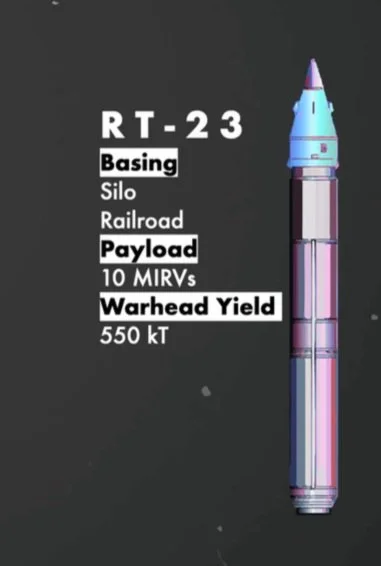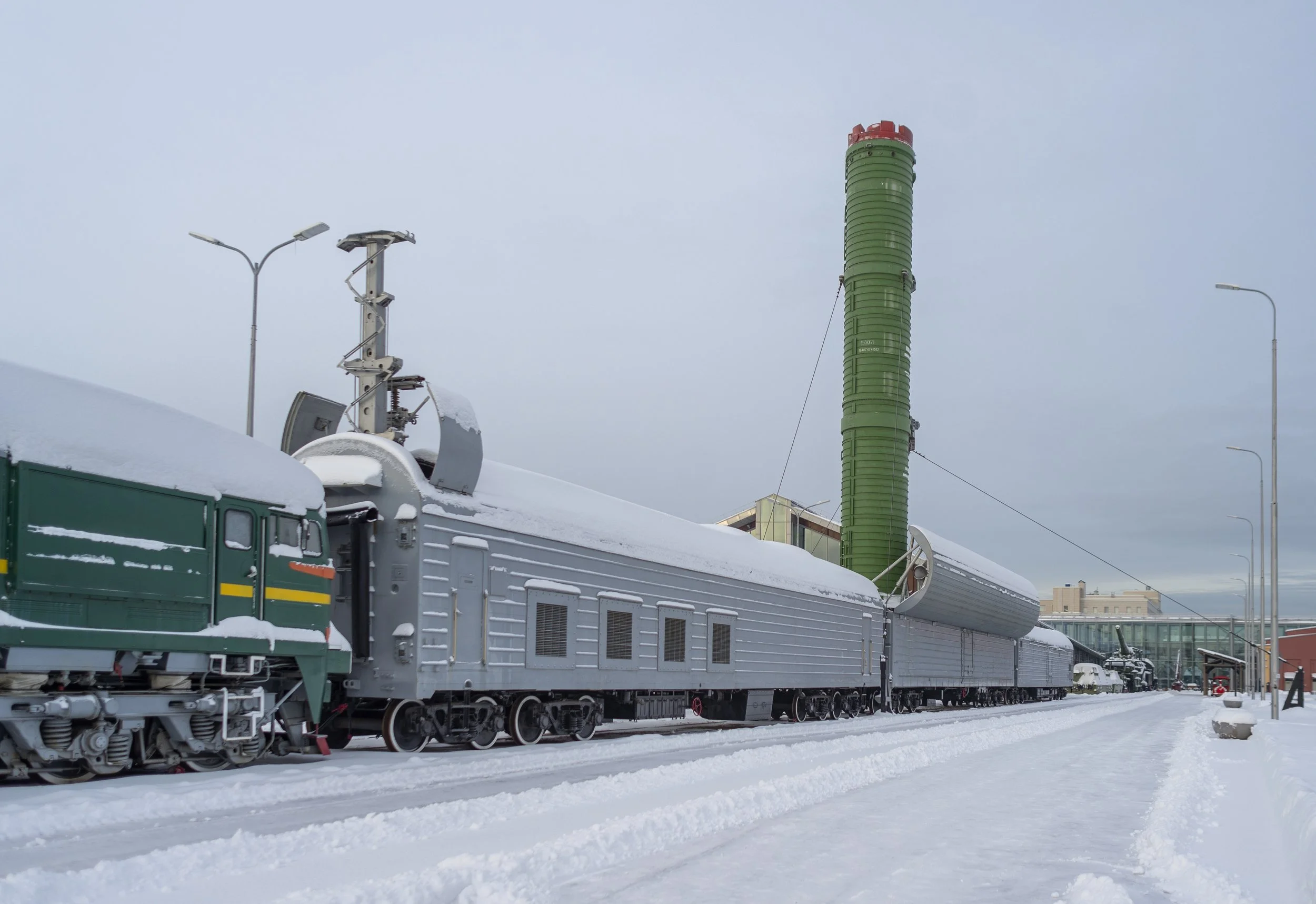From Development to Decommission: The Impact of the Soviet RT-23/SS-24 ICBM and Its Rail Launcher
History and Development
The RT-23, known by its NATO designation SS-24 Scalpel, was a formidable intercontinental ballistic missile (ICBM) developed by the Soviet Union during the Cold War. Unique for its deployment on rail-based platforms, it played a significant role in the strategic arms race between the United States and the Soviet Union.
The Soviet Union developed the RT-23 in the 1980s as part of its strategy to ensure the survivability of its nuclear arsenal. The missile was designed by the Yuzhnoye Design Bureau in Ukraine, and its first test flight occurred in 1983. The RT-23 was introduced into service in 1987, representing a significant technological advancement in the Soviet nuclear forces.
One of the most notable features of the RT-23 was its deployment system. Unlike traditional ICBMs, which were launched from fixed silos or mobile road-based platforms, the RT-23 was deployed on railcars, known as the BZhRK (Boezhedubrakomplekt), or "Combat Rail Missile Complex." This rail-based system provided several advantages, including mobility and concealment. The missiles could be moved across the vast railway network of the Soviet Union, making it difficult for adversaries to track and target them.
The RT-23 was a three-stage solid-fueled missile measuring approximately 23 meters long and 2.4 meters in diameter. It had a range of around 10,000 kilometers and could reach global targets. The missile's warhead was equipped with Multiple Independently Targetable Reentry Vehicles (MIRVs), allowing it to carry up to ten nuclear warheads, each capable of being directed to a different target.
MIRV technology was a critical component of the RT-23's design. This technology enabled a single missile to deliver multiple nuclear warheads to different targets, significantly enhancing its destructive potential. MIRVs increased the missile's ability to penetrate enemy defenses and ensured a counterattack could be devastatingly effective.
The RT-23, with its BZhRK rail-based launch system, was designed to ensure the Soviet Union's ability to retaliate in the event of a nuclear attack. Its mobility made it a highly survivable component of the Soviet atomic triad, which also included land-based silos and submarine-launched ballistic missiles. The ability to move the missiles across the vast Soviet railway network added an element of unpredictability, complicating the enemy's targeting efforts.
During the Cold War, the arms race between the United States and the Soviet Union led to the development of increasingly sophisticated and powerful nuclear weapons. The RT-23 and its rail-based deployment system were part of this broader effort to maintain a credible deterrent. The RT-23 was considered one of the most advanced ICBMs of its time, reflecting the Soviet Union's technological prowess.
Deactivation and Destruction
The Strategic Arms Reduction Treaty (START II), signed by the United States and Russia in 1993, aimed to reduce the number of strategic nuclear weapons held by both nations. One of the critical provisions of START II was the elimination of MIRV-equipped ICBMs, including the RT-23. As a result of START II, the RT-23 missiles and their rail-based launch systems were deactivated and dismantled. By the early 2000s, all RT-23 missiles had been removed from service, and the BZhRK railcars were either destroyed or repurposed. This marked the end of an era for one of the most unique and mobile nuclear delivery systems ever developed.
Final Thoughts
The development and deployment of the RT-23 and its rail-based launch system had a lasting impact on strategic thinking during the Cold War. It underscored the importance of mobility and survivability in nuclear deterrence. The concept of deploying ICBMs on railcars was a novel approach that highlighted the lengths to which the superpowers would go to ensure the effectiveness of their nuclear arsenals.
RT-23 (SS-24 Scalpel) Missile and BZhRK autonomous launching module. Video Source Link: youtube.com/@Puchineg.
Sources:
Rail Mobile ICBMs - Ghost Trains, globalsecurity.org, 2020.
RT-23 / SS-24 Scalpel, Federation of American Scientists, 2020.
The Soviet Union’s Railway-Based Intercontinental Ballistic Missile Had An Inflatable Nosecone, The Warzone, 2021.




